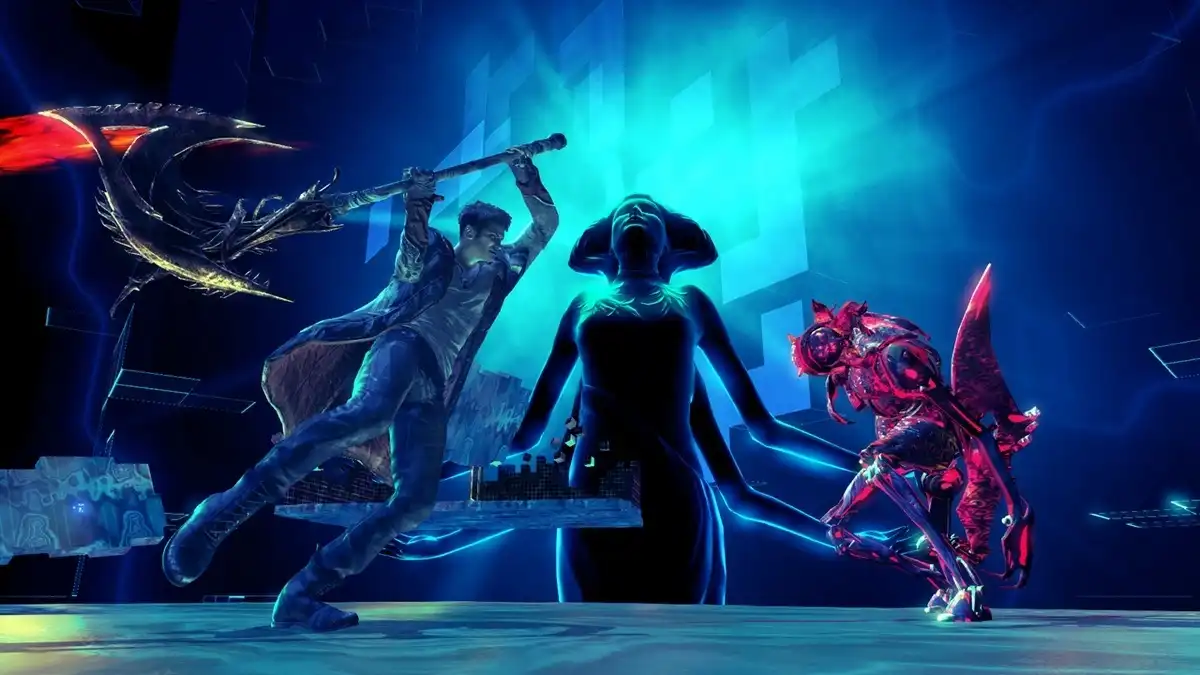E3 Day Two – Capcom
Events
I decided to follow my E3 buddy and fellow SLUG Writer Thomas Winkley (who covered E3 for Big Shiny Robot) to the line where Capcom was handing out tickets to demo their reboot of the Devil May Cry series, DMC. Ninja Theory’s decision to shake up their designs raised the hackles on more than a few fans of the series, but being a fan myself, I couldn’t give up the chance to check it out.
We both got our tickets and agreed to meet after our respective travels across the convention center. When we returned, we were both ushered into a dark inner chamber, screens flickering beyond curtains of beads and a stripper pole. It seems almost irrelevant to mention the pole dancer present, who seemed somewhat bored by the inattentive audience fixed on the pitched action right before their eyes, headphones on, tapping away at their controllers. I took up a controller myself, donning the headphones to drown out the irritating dance music in the background.
Moments after wrangling with the controls, I entered a hack-and-slash trance I haven’t felt since Bayonetta’s gleeful absurdity. The premise is simple—you are Dante, walking through the city of Limbo. After implying that an in-game soda is somehow tied to a demonic presence, you very quickly find yourself to be an unwelcome guest.
Spotted by a demon-eyed security camera, the world seems to crumble around you, leaving only a twisted mockery of its previous landscape behind. Glowing red letters start tearing across the walls, mocking and forbidding you further entry. Buildings surge and burgeon into your path, occasionally trying to smash you and threatening to hinder your progress if you don’t move fast enough. Dante’s design seems a lot less greasy now, with short-chopped hair instead of the questionable comb-over revealed at 2010’s Tokyo Game Show.
At first, Dante dispatched a squad of sketchy-looking demons with his signature sword and twin pistols, but the game quickly showed a deeper complexity. On the fly, you can switch your sword for a giant demonic greataxe or a heavenly azure scythe. The greataxe’s attacks all center around sticking to the ground as you pummel your enemies and shoot them into the air, while the scythe is all about aerial combat and broad area attacks.
Using these two in tandem created endless opportunities for slick, polished combat. Then you start getting into the pull mechanic, which might be the biggest reason I truly enjoyed my time with the game. The demonic greataxe allows you to pull enemies closer, which sucks them out of the air and into range, or simply wrenches that dope dancing around out of range in for a nice friendly hello, Scorpion-style.
With the angelic scythe, you can pull yourself right up close to an enemy, meaning that Dante is constantly zipping around the battlefield, chopping up demons without pause. These mechanics are also useful for activating platforming puzzles which, due to this being a demo and not a full release, were somewhat buggy and hard to trigger properly.
After the first leg of the demo, you could fight a boss from later in the game, and after a brief exchange of verbal abuse, the fight began. This freaky four-armed cocoon-looking creature vomited acid and raked her four arms across the narrow platforms, and rightly kicked my sorry ass several times.
The boss fights in DMC may prove to be cause for controller-pitching fury, but that only makes them a more exciting challenge. Perhaps next time I won’t be wading through caustic puke for the majority of the fight.
